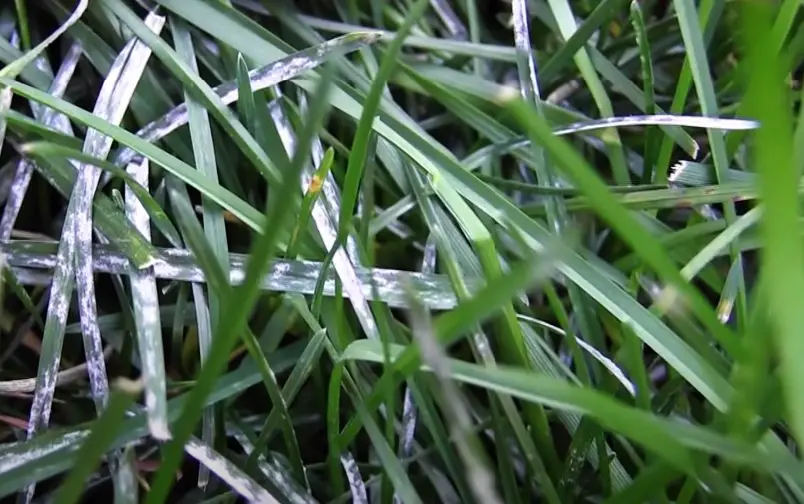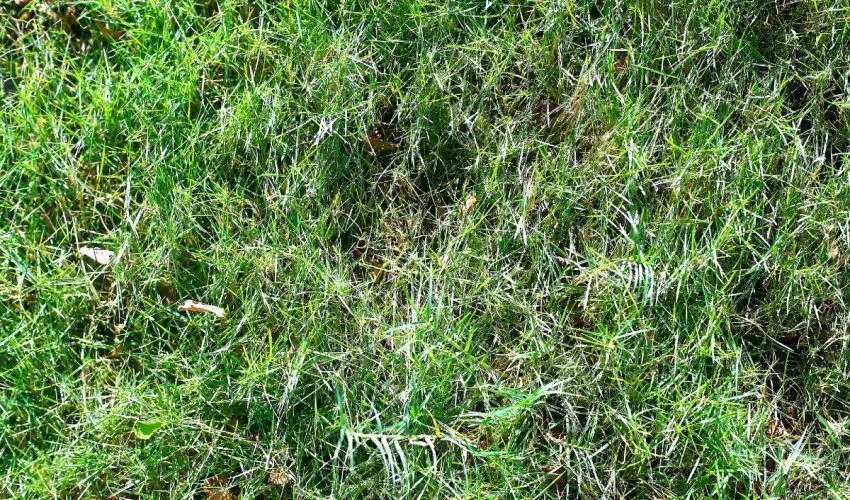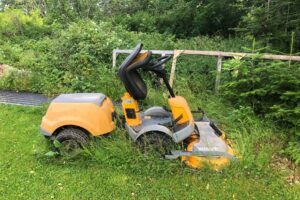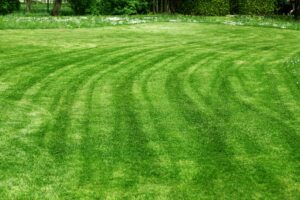While this disease is not necessarily harmful to your grass, it will make your lawn look unhealthy. So, how do you solve this crisis?
Table of Contents
ToggleFirst and foremost, you need to confirm that your lawn has powdery mildew. Let’s take a look at the steps you need to diagnose, treat and prevent powdery mildew grass.
How to Spot Powdery Mildew in Your Lawn?
Powdery mildew can be identified by its white, powdery patches on the leaves of grass. It usually starts out as small spots, but it can spread quickly if not treated properly.
The spots are generally found on the top surface of the leaf and may look like flour or talcum powder.
As the disease progresses, these spots become yellow and eventually brown, causing the leaves to curl up. In severe cases, the grass may turn yellow or brown, and patches of dead turf will appear. If you suspect that your lawn has powdery mildew, it’s important to take action quickly.

What’s the Cause of Powdery Mildew?
The most common area affected by this lawn disease is shaded areas and places with poor air circulation. Powdery mildew is most commonly found around trees, fences and structures such as buildings.
This mildew thrives in areas that are dark with a lack of circulated air. Sometimes homeowners detect powdery mildew in early spring all the way through summer. Due to the fact it thrives in cool, humid and shaded areas of your property, these conditions can help spread the disease.
How To Treat Powdery Mildew
There are several natural alternatives to fungicides that can be used to treat Powdery Mildew in a lawn. Before resorting to using chemical treatments, try these methods first.
1. Naturally Treating the Mildew
If you are experiencing powdery mildew in your lawn, there are a few steps that can be taken to help treat it. Increase the amount of natural sunlight and air circulation in shaded areas. Avoid using nitrogen fertilizer or cut back significantly as this encourages mildew growth.
You should also consider overseeding your lawn with a shade-tolerant grass blend.
When watering, do so in the early morning hours between 6-9 a.m., and stop any evening waterings. This will help prevent the mildew from worsening. If these methods doesn’t work, you might need to treat the grass with fungicides.
2. Treating the Powdery Mildew With Fungicides
The most effective way to treat powdery mildew is with a fungicidal spray. These sprays are available in both liquid and powder form and can be applied directly to infected plants. Make sure to cover the entire plant, including the underside of leaves, as the fungus can spread quickly between plants.
Fungicides containing neem oil, sulfur, or potassium bicarbonate are the most effective for treating powdery mildew.
How to Prevent Powdery Mildew
The best ways to prevent Powdery Mildew in your lawn is to water your lawn in the morning, increasing air circulation, Increase the amount of natural sunlight and reduce the amount of water and fertilizer.
Another strategy for preventing powdery mildew is done during the reseeding process. When reseeding your lawn, make sure to use powdery mildew-resistant grass. This includes varieties such as turf-type tall fescues, improved fine fescues, shade-tolerant Kentucky bluegrass and fine-textured perennial ryegrass.
Conclusion
Powdery mildew is a common lawn disease that can be damaging to your turf if left untreated too long. Early detection and proactive maintenance are the best ways to prevent and treat this disease. Try and increase the amount of natural sunlight and air circulation. Make sure to water your lawn in the morning and reduce the use of fertilizer.
If that wont help you can try and reseed your lawn with powdery mildew-resistant grass varieties to help reduce the risk of this disease.




